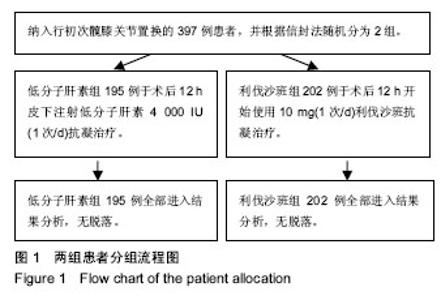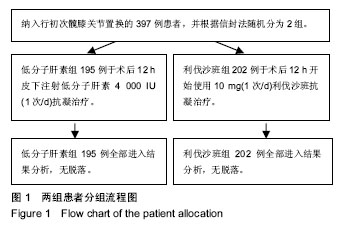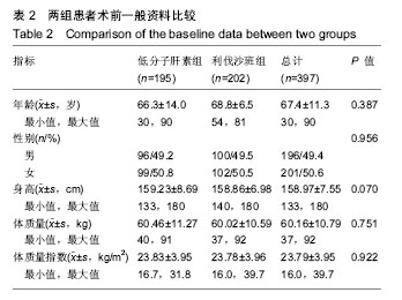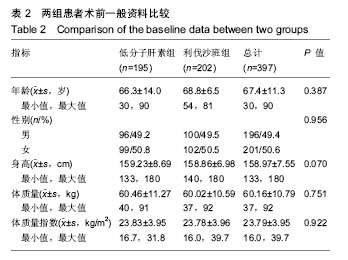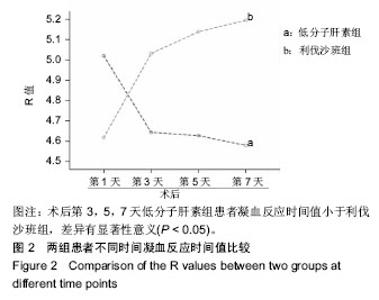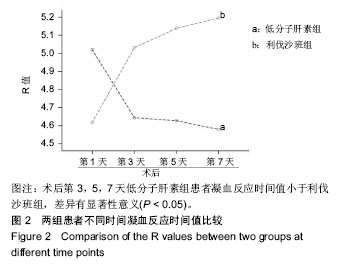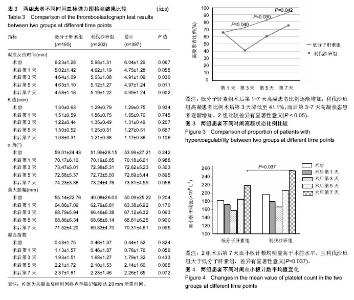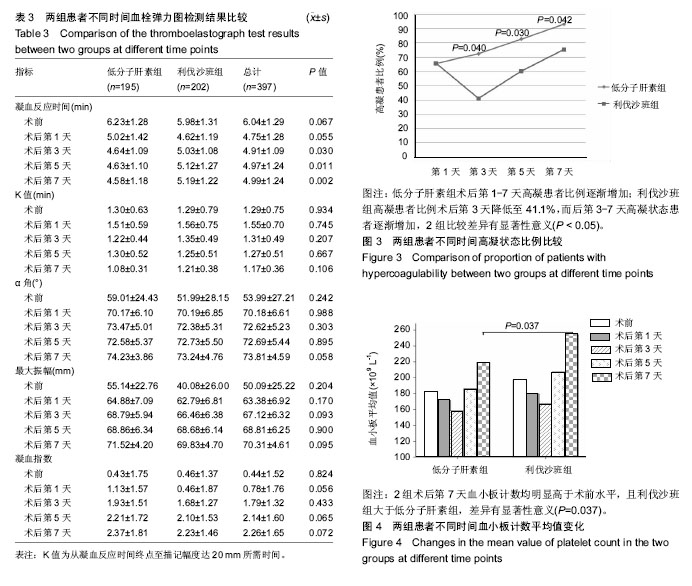| [1] Kurtz S, Ong K, Lau E, et al. Projections of primary and revision hip and knee arthroplasty in the United States from 2005 to 2030. J Bone Joint Surg Am. 2007;89(4): 780-785.[2] Weiser TG, Regenbogen SE, Thompson KD, et al. An estimation of the global volume of surgery: a modelling strategy based on available data. Lancet. 2008; 372(9633): 139-144.[3] Virchow RLK. Thromboseund Embolie. Canton, MA: Science History Publications, 1998.[4] Martinelli I, Bucciarelli P, Mannucci PM.Thrombotic risk factors: basic pathophysiology. Crit Care Med. 2010; 38 (2 Suppl): S3-9.[5] Al-Eidan FA. Is the incidence trend of heparin-induced thrombocytopenia decreased by the increased use of low-molecular-weight-heparin? Mediterr J Hematol Infect Dis. 2015;7(1): e2015029.[6] Falck-Ytter Y, Francis CW, Johanson NA, et al. Prevention of VTE in orthopedic surgery patients: antithrombotic therapy and prevention of thrombosis, 9th ed. american college of chest physicians evidence-based clinical practice guidelines. Chest. 2012;141(2 Suppl):e278S-e325S.[7] Freedman KB, Brookenthal KR, Fitzgerald RH Jr, et al. A meta-analysis of thromboembolic prophylaxis following elective total hip arthroplasty. J Bone Joint Surg Am. 2000; 82-A(7): 929-938.[8] Yang Y, Yao Z, Dai W, et al. Changes of thrombelastography in patients undergoing elective primary total knee and total hip replacement with low molecular heparin prophylaxis. J Orthop Surg Res. 2014; 9: 52.[9] Zou Y, Tian S, Wang Y, et al. Administering aspirin, rivaroxaban and low-molecular-weight heparin to prevent deep venous thrombosis after total knee arthroplasty. Blood Coagul Fibrinolysis. 2014;25(7): 660-664.[10] Gonzalez E, Kashuk JL, Moore EE, et al. Differentiation of enzymatic from platelet hypercoagulability using the novel thrombelastography parameter delta (delta). J Surg Res. 2010;163(1): 96-101.[11] Kearon C. Epidemiology of venous thromboembolism. Semin Vasc Med. 2001; 1(1): 7-26.[12] Reikvam H, Steien E, Hauge B, et al. Thrombelastography. Transfus Apher Sci. 2009;40(2): 119-123.[13] Dias JD, Norem K, Doorneweerd DD, et al. Use of thromboelastography (teg) for detection of new oral anticoagulants. Arch Pathol Lab Med. 2015;139(5): 665-673.[14] Ågren A, Wikman AT, Holmström M, et al. Thromboelastography (TEG(R)) compared to conventional coagulation tests in surgical patients--a laboratory evaluation. Scand J Clin Lab Invest. 2013;73(3): 214-220.[15] Mont MA, Jacobs JJ. AAOS clinical practice guideline: preventing venous thromboembolic disease in patients undergoing elective hip and knee arthroplasty. J Am Acad Orthop Surg. 2011;19(12): 777-778.[16] Park MS, Martini WZ, Dubick MA, et al. Thromboelastography as a better indicator of hypercoagulable state after injury than prothrombin time or activated partial thromboplastin time. J Trauma. 2009; 67(2): 266-275; discussion 275-276.[17] Kashuk JL, Moore EE, Sabel A, et al. Rapid thrombelastography (r-TEG) identifies hypercoagulability and predicts thromboembolic events in surgical patients. Surgery. 2009;146(4): 764-772; discussion 772-774.[18] Mustard JF. Platelet survival. Thromb Haemost. 1978;40(1): 154-162.[19] Chamberlain KG, Penington DG. Correlation between megakaryocyte-platelet regeneration time and mean platelet volume. Thromb Res. 1988;50(5): 739-744.[20] Latour JG, Trudel JR, Campeau L, et al. Platelet regeneration time and late occlusion of aortocoronary saphenous vein bypass grafts. Can Med Assoc J. 1980;122(12): 1390-1393.[21] Warkentin TE. Heparin-induced thrombocytopenia: pathogenesis and management. Br J Haematol. 2003; 121(4): 535-555.[22] Joglekar M, Khandelwal S, Cines DB, et al. Heparin enhances uptake of platelet factor 4/heparin complexes by monocytes and macrophages. J Thromb Haemost. 2015;13(8): 1416-1427.[23] Fassiadis N. Rivaroxaban: direct factor Xa inhibition to treat acute deep vein thrombosis. Br J Hosp Med (Lond). 2011; 72(9):486.[24] Alves C, Batel-Marques F, Macedo AF. Apixaban and rivaroxaban safety after hip and knee arthroplasty: a meta-analysis. J Cardiovasc Pharmacol Ther. 2012;17(3): 266-276.[25] Zhao X, Sun P, Zhou Y, et al. Safety, pharmacokinetics and pharmacodynamics of single/multiple doses of the oral, direct Factor Xa inhibitor rivaroxaban in healthy Chinese subjects. Br J Clin Pharmacol. 2009; 68(1):77-88.[26] Johnson GJ, Leis LA, Bach RR. Tissue factor activity of blood mononuclear cells is increased after total knee arthroplasty. Thromb Haemost. 2009;102(4):728-734.[27] Greinacher A. Clinical practice. Heparin-Induced Thrombocytopenia. N Engl J Med. 2015;373(3): 252-261.[28] Junqueira DR, Zorzela LM, Perini E. Unfractionated heparin versus low molecular weight heparins for avoiding heparin-induced thrombocytopenia in postoperative patients. Cochrane Database Syst Rev. 2017;4: CD007557.[29] Gómez-Outes A, Terleira-Fernández AI, Suárez-Gea ML,et al. Dabigatran, rivaroxaban, or apixaban versus enoxaparin for thromboprophylaxis after total hip or knee replacement: systematic review, meta-analysis, and indirect treatment comparisons. BMJ. 2012;344: e3675.[30] Lazo-Langner A, Fleet JL, McArthur E, et al. Rivaroxaban vs. low molecular weight heparin for the prevention of venous thromboembolism after hip or knee arthroplasty: a cohort study. J Thromb Haemost. 2014;12(10): 1626-1635. |
